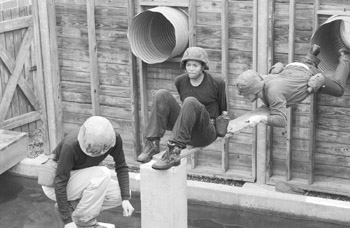The Fall of AES
Maverick electric power producer AES s aggressive decentralized approach to managing, developing, and acquiring generation and distribution facilities resulted in a spectacular rise ”and fall ”from 1996 to 2002. At the heart of the fall was a failure on the part of senior management to provide clear commander s intent, supervise adequately, and hold individuals accountable for transgressions of integrity.
Roger Sant, a former university professor , and Dennis Bakke, a career public official, decided when they founded the company in 1981 to forsake traditional corporate checks and controls and, instead, placed their full, if not blind, trust in their people. AES plant managers, who were closest to day-to-day operations, enjoyed unprecedented autonomy to oversee their plants as self-contained businesses; all decisions were made at the plant level under their supervision. Newly minted MBAs negotiated multimillion-dollar project loans and fuel procurement contracts. And in the 1990s AES power plant developers received free reign to invest aggressively in opportunities in the United States and developing areas, such as Latin America, southern Asia, and the former Soviet Union. Owing to this unique decentralized approach, AES was widely heralded as a new paradigm in the historically stodgy electric power and utilities industry.
But electric power markets in the United States and around the world failed to develop as economists had predicted , and AES s high-flying stock price tumbled from $70 per share in October 2000 to $5 per share in June 2002. Investors had lost faith in the assumptions underlying the company s earnings guidance and in the ability of AES senior management to address the challenges that the depressed power markets presented.
This loss of faith was well justified. As evidenced by remarks such as We don t have a grand central plan at AES. We re pretty much opportunists, [8] Bakke was not providing his company with a unifying strategic direction beyond the articulation of AES s core values of integrity, fairness, social responsibility ”and fun . Project developers and regional managers received no clear, overarching guidance as to how to diversify risk across AES s burgeoning portfolio of assets, and as a result bottom-up opportunism caused disproportionate growth in areas with high local risk, notably Latin America and California. Even at the operational level, AES lacked consistent policies for activities such as purchasing, which hurt the company s relationships with suppliers and contractors and eroded benefits from scale. According to one consultant, suppliers objected to ˜a lot of people in the project structure doing things the way they want to. [9]
Furthermore, basic supervision at AES was woefully inadequate at multiple levels. Said Sant, We have no sign-offs. None whatsoever. Zero. [10] The tough questions were not being asked. No one was double-checking inexperienced MBAs as they negotiated multimillion-dollar deals with industry veterans . As project developers made final decisions to build or acquire plants, the assumptions underlying the projections used to justify their multimillion-dollar commitments were not scrutinized rigorously. Not asking tough questions himself, Bakke was far removed from these and other major decisions. In one instance he did not learn about AES project developers successful $1 billion tender offer for Chilean power company Gener, S.A., until, in his words, after the fact. [11] Even worse , he failed to punish adequately a breach of integrity at AES s Shadypoint plant in Oklahoma, where workers had falsified emissions data. Finally, AES s board of directors failed to ask their CEO tough questions, demand greater diversification in the AES portfolio, and challenge the assumptions underlying AES s opaque consolidated financial projections.
Under pressure from disgruntled investors, Bakke resigned as CEO in June 2002. And in January 2003 the company announced a $2.7 billion noncash charge related to the reduction in the value of certain assets in the United States, United Kingdom, and Brazil.
Leadership Lessons
Among the litany of factors that contributed to AES s spectacular rise and fall, decentralized decision making played a central role. The company s unorthodox, freewheeling philosophy inspired higher levels of performance throughout its ranks, released the creativity and ingenuity of its employees , and afforded plant managers and project developers ample latitude to capitalize on market opportunities as they appeared. But without unifying intent, adequate supervision, and accountability, operations unfortunately degenerated into little more than a collection of individuals pursuing personal objectives.

Figure 8.2: Demonstrating the widespread applicability of the Marine Corps Leadership Reaction Course in Quantico, MBA Students from the Wharton School work together to negotiate an obstacle .
[8] Druckerman, Pamela, How to Project Power Around the World, Wall Street Journal , November 13, 2000, A23.
[9] Markels, Alex, Team Approach: A Power Producer Is Intent on Giving Power to Its People, Wall Street Journal , July 3, 1995, A1.
[10] Woellert, Lorraine, Not Acting at All Like a Utility, BusinessWeek , December 13, 1999, 94.
[11] Druckerman, A23.
EAN: 2147483647
Pages: 145